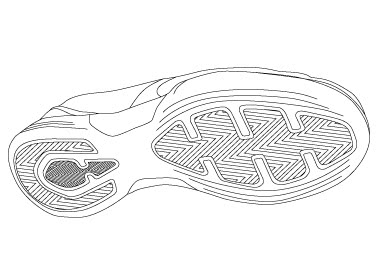Outsole
What is the sole in a running shoe?
The sole is one of the most important parts of a running shoe. While the upper determines the fit and comfort, the outsole determines the type of surface the shoe is designed for, as well as the runner's style.
Different versions of the same shoe model can be designed for asphalt, packed earth, trails or tracks simply by changing the sole's design, compound or geometry.
What is the sole so important in running?
- Traction: The outsole provides the grip you need for safe running. An aggressive lug pattern is ideal for mountain or trail running, whereas a flatter design with a larger contact surface works better on asphalt.
- Stability: A good sole provides structure to the stride, helping to maintain control during transitions. Some models incorporate stabilising elements or guides to align the stride and reduce the risk of injury.
- Flexibility and fluidity: The flex grooves in the sole allow the shoe to adapt to the foot's natural movements, particularly during the toe-off phase. A flexible shoe encourages a fluid and dynamic stride.
- Durability: The type of rubber used in the outsole directly affects wear resistance. More durable compounds are used in daily training shoes, whereas racing shoes prioritise performance, even if this results in a shorter lifespan.
- Weight: Although it may not seem like it, the sole can have a significant impact on the overall weight of the shoe. Brands are constantly looking to strike a balance between lightness, grip and durability.

Log in or
create your account
Your best self starts here. Come in and get in your prime